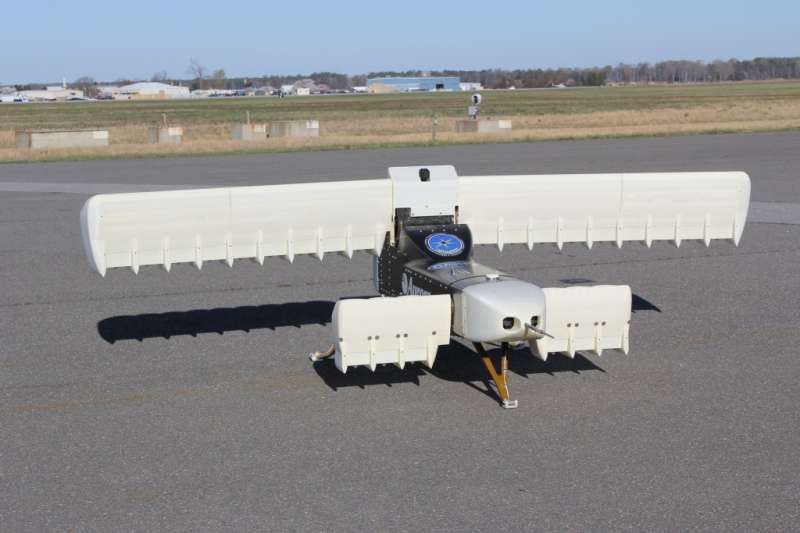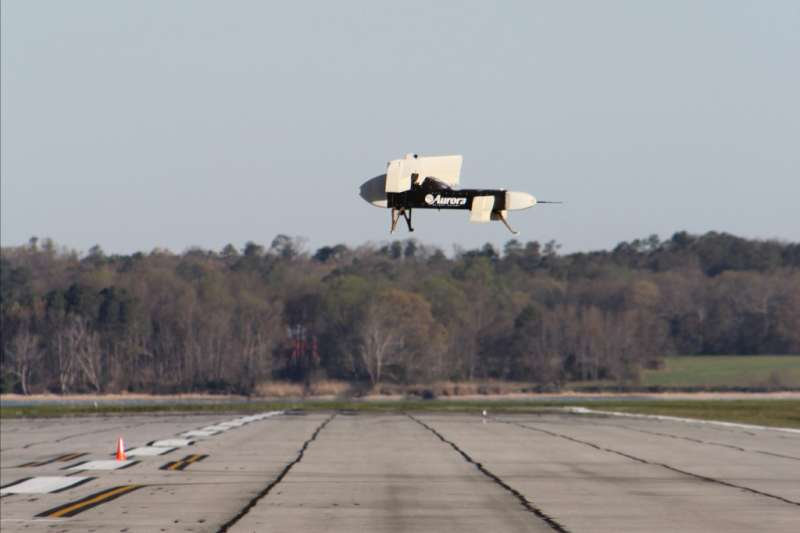Credit: Aurora Flight Sciences
(Tech Xplore)—Aurora Flight Sciences has announced that its X-plane prototype (code named the LightningStrike), the XV-24A, an aerial vehicle with vertical take-off and landing (VTOL) capabilities and driven by 24 variable-pitch ducted electric fans, completed another test flight recently. The test flight at a Manassas Virginia airstrip earlier this month marked another milestone for the DARPA-funded project.
The U.S. Defense Department has made clear its desire for a craft that can take off and land like a helicopter but fly as fast as jet. Such a craft would have quick-strike capabilities without the need for a runway, which would allow it to be used in much more remote locations.
The XV-24A is a much smaller version of the fully sized XV-24, a 24,000-pound craft which will have a 61 foot tiltwing wingspan, and is soon to be tested —it is hoped the craft will be able to fly twice as fast as a traditional helicopter (approximately 300 to 400 knots) and with 15 percent more hovering efficiency.
The most recent subscale test showed that the smaller mockup, which weighs just 325 pounds, was able to rotate its fans, take off, hover and land successfully. It also passed several technical challenges (such as demonstrating no loss of altitude during transitions between vertical and horizontal flight), the company reports, which means that the team will next test a full-sized version of the craft sometime next year.
The fans on the craft are spread across the wings and canard (tailpiece) and will eventually be powered by a what the team calls an electric distributed propulsion system—each fan has an electric motor powered by a Rolls-Royce AE 1107C turboshaft engine, which currently powers the military's V-22 Osprey twin prop tiltrotor aircraft—it will turn three generators from Honeywell. The mockup was powered by a lithium ion battery. If development of the craft proves successful, Aurora notes, it will be the first working aircraft in history to make use of such a power system.
Aurora CEO John Langford declared the successful test a demonstration of a mature and innovative aircraft and a unique achievement in aviation history.
Credit: Aurora Flight Sciences
More information: www.aurora.aero/lightningstrike/
© 2017 Tech Xplore

























